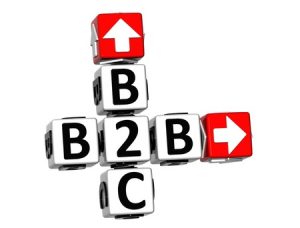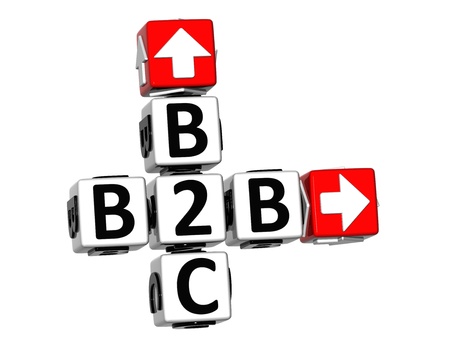
Marketing is marketing whether you are speaking to businesses or individuals, right? Not so fast. While customers in both segments may have similar personal needs, using consumer-focused strategies in a business-to-business marketplace can be costly both in the short- and long-term. To maximize your marketing resources and opportunities, consider these four key differences between B2B and B2C marketing.
B2B and B2C Marketing Differences
1. Decision Makers. B2B decision makers often involve multiple stakeholders in various areas of the organization. They can include individuals in specific departments, with certain job titles. Also, in this market segment, decisions might come in stages and by committee. As such, marketing and sales messaging, material and approaches need to be flexible to appeal to the diverse audiences. These messages also address their different pain points and provide solutions. On the other hand, B2C decision makers tend to be individuals or couples. While fewer people are involved in the decision making process, it’s just as important for marketers to have an in-depth understanding of how varying demographics such as age, gender, race, income, interests, hobbies and spending habits affect this group’s buying decisions.
2. Purchase Motivation. The B2B market looks for credibility, efficiency and expertise. Logic and judgement drive these buyers. They seek to build long-term relationships. That’s one reason why providing more value through post-sale service is important in the B2B market. In contrast, emotions, such as status, security, comfort, convenience and quality, drive the B2C market. Also, with these individuals, there is more concern about cost. There’s also a greater propensity to “jump ship” when a better offer comes along.
3. Content and Delivery Channels. The B2B market is willing to review extensive content with a goal of becoming informed and educated about the product or service being considered. Longer content is especially effective later in the sales cycle, particularly when it includes a focus on ROI. Questions and answers, assessments, evaluations and other forms of dialogue or engagement are important here. Messaging can be delivered in the form of:
- White papers
- Success stories
- Press releases
- Newsletters
- Bylined articles
- Brochures
- PowerPoint presentations, and
- Face-to-face meetings.
When selling to consumers, however, content needs to be more creative and entertaining. Including special incentives to encourage the prospective buyer to make a decision “now” and not in the future is ideal. Shorter content is better with this group and delivery channels often include more social media options, advertising, coupons and direct mail.
4. Selling Technique. In the B2B sales environment, the process is far more consultative. Plus, it requires nurturing and close attention from everyone involved in customer contact. Developing and cultivating relationships are essential to making the sale. In the B2C sales environment, it is different. Generally consumers deal with brick-and-mortar or online retailers, where the exchange is likely to be relatively short. With the exception of large ticket items, such as a house or a car, prospective buyers usually know what they want. While friendly, efficient, knowledgeable salespeople are an asset, the sales conversation or interchange is more order-taking in nature.
Different Strokes for Different Folks

B2B and B2C marketing may overlap in some areas, but they do have very different goals, strategies and tactics. No matter which market you important to are catering to, it’s essential to understand the needs, challenges and motivations of your buyers. Additionally, it is important to have a thorough understanding of the marketplace, including the competition. Use this marketplace understanding to create effective messaging that consistently reinforces the brand. It’s also important that this messaging is meaningful and memorable for the target audience, stands out from the “noise” and achieves the company’s business and revenue goals.

